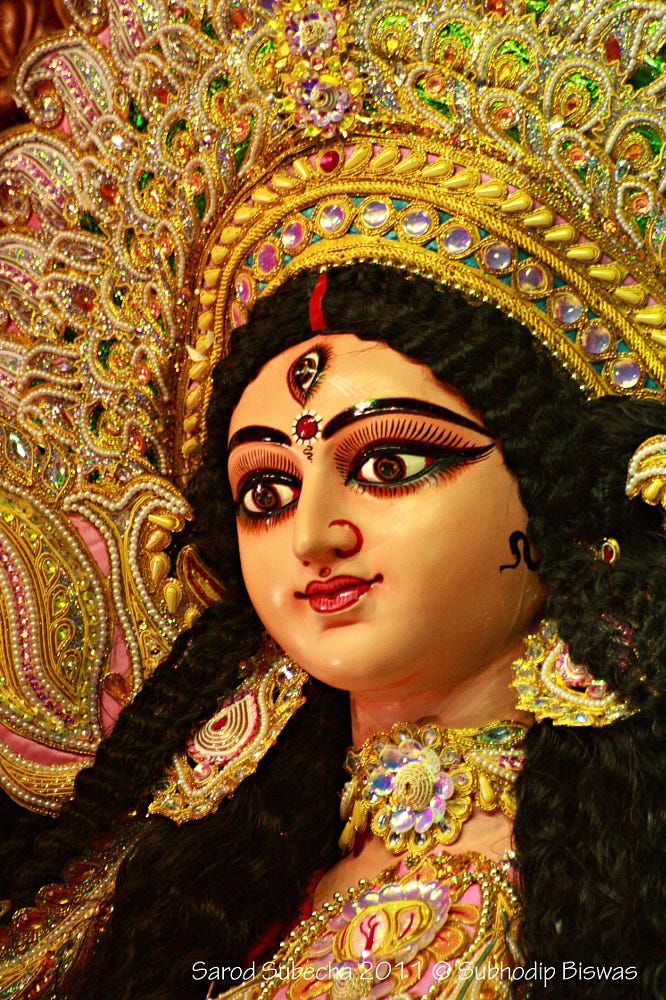Garba as a devotional dance for Goddess Durga
Garba is a devotional dance dedicated to Goddess Durga, embodying deep spiritual significance within Hindu culture. Originating from Gujarat, it is primarily performed during Navratri, a nine-night festival celebrating the Divine Feminine in her various forms, especially Durga, who symbolizes power, strength, and protection against evil. The word “Garba” comes from the Sanskrit “Garbha,” meaning womb, symbolizing fertility, life, and creation.
The dance is traditionally performed in a circular formation around a “Garbha Deep” (a clay lantern with a light inside) or an image of Goddess Durga. This circular movement represents the cyclical nature of life, the eternal return, and the cosmic energy—mirroring the goddess’s divine presence as the unchanging center in a constantly moving universe. Through the rhythmic clapping, twirling, and steps, Garba conveys devotion, gratitude, and the celebration of feminine energy (Shakti).
Garba also symbolizes the victory of good over evil, mirroring the legend of Goddess Durga’s triumph over the demon Mahishasura. The joyful and energetic dance embodies this eternal victory and fosters community unity, as people of all ages and backgrounds come together in worship and celebration. Thus, Garba is more than a dance—it’s a spiritual practice that venerates the goddess, celebrates womanhood, and symbolizes universal life cycles and cosmic rhythms.
